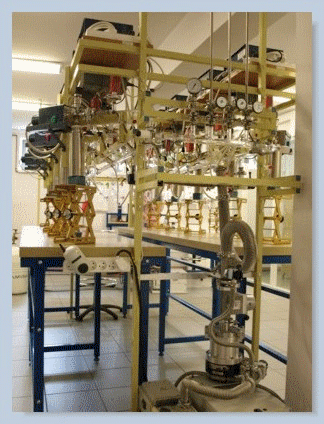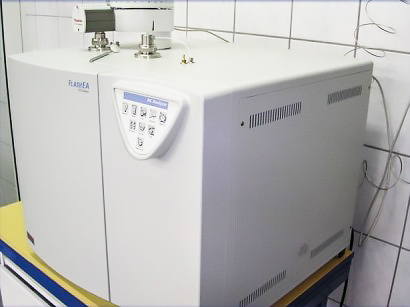
The goal of sample preparation is to produce graphite cathode from carbon contained in the sample. This procedure must remove any contamination, which was deposited in the sample after death of dated organism. The procedure itself should not introduce carbon contamination, either. The produced cathodes can then be inserted into the AMS spectrometer, for measurements of carbon isotopic ratios.
Sample preparation consists of three steps:

Poznań Radiocarbon Laboratory has got all necessary equipment for chemical pretreatment of common types of samples.
It is also equipped with self-built vacuum lines for production of CO2 from the samples and its further graphitisation.
At each step, up to 20 samples can be proceeded simultaneously. Full preparation procedure of common sample types takes 5-6 days.
Methods of chemical pretreatment depend on the sample type:
- AAA (acid-alkali-acid) – three-step treatmet with solutions of acid and base. It removes humic and fulvic acids, and secondary carbonates deposited in organic fractions of sediments. It is used for most types of organic samples.
- Selective acid leaching – it removes surface layers of shells and speleothems.
- Collagen extraction – it extracts the bone protein, which is least susceptible to carbon exchange with the environment. It is used for bone samples.Before extraction, preservation of collagen in bone is checked by measurement of N and C content in bone, using the ThermoFischer NC analyser, and only bones with sufficiently high nitrogen content, and sufficiently low C/N ratio are qualified for collagen extration. The extracted collagen undergoes filtration on Vivaspin 15 – 30kD ultrafilters, which removes broken aminoacid chains of degraded collagen fraction.

![]() Download full description of our procedures
Download full description of our procedures
For more details on pretreatment procedures, visit the websites of Waikato & Oxford 14C Laboratories
Other pages on sample preparation:
General – chemical pretreatment | CO2 production | Graphitisation
